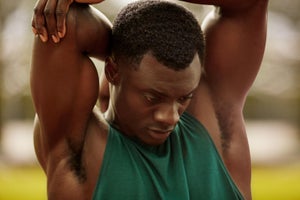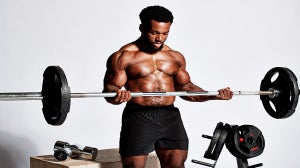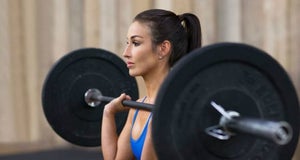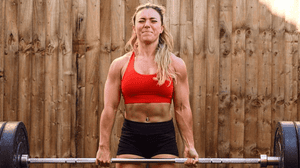
Written by Jack Boardman
Working Fast and Slow Twitch Muscles
By now, if you’ve come across the terms fast and slow twitch muscles, you might wonder how this relates to your gym goals and how they come into play. First, you’ll need to understand how muscle fibers work when attempting to lift a few reps of something too heavy for your body compared to working your muscles for something more endurance-based.
There are two kinds of muscle fibres. The first, the “slow-twitch” muscle, which is dense with capillaries and high in myoglobin. These fibres are more resistant to fatigue and are the lesser of the two when it comes to growth and power. Type 2, “fast-twitch” muscle fibres contract faster and grow faster than type 1 fibres, meaning they have a higher capacity for strength and power. Type 2 muscle fibers fatigue faster.

The Difference
Type 1 muscle fibers have a slower contractile speed, the smaller cross-sectional area, the highest aerobic capacity and the lowest anaerobic capacity.
Type one muscle fibers are used mostly in endurance exercises by the likes of runners and cyclists.
Type two muscle fibers are used by powerlifters and bodybuilders. You can more or less consider them the opposite, with short bursts of power as opposed to the long distance endurance of type 1.
They have a faster contractile speed and the largest cross-sectional area. They also have the highest anaerobic capacity and the lowest aerobic capacity.

To begin, as a general rule, the higher number of reps you do, the more you will work your slow-twitch muscle fibers. The lower the reps, the more fast-twitch fibers you will work.
Motor neurons stimulate your muscles to contract. They carry impulses from your brain. One motor neuron controls anywhere from 2-2,000 muscle fibers. When you partake in light exercise, motor neurons will stimulate type 1 muscle fibers.
How Can You Put This In The Context Of Your Workout?
Powerlifting involves firing on as many motor units as possible at once. When you lift a set of heavy low reps, your body will recruit motor units to overcome the weight. As you learn to lift heavier weights, your body will learn to lift with as many motor units as possible in one rep.
When you do a lower number of reps you will work more fast-twitch fibers. You can utilise this to your advantage by gaining strength by using a low number of reps. Another effective use, particularly for bodybuilders struggling to reach a new level, is to focus on a set of 1-5 reps and lower this number to increase weight. Once the body learns to be comfortable with this increase, put the number of reps up again. This way you will also be working close to the highest percentage of your one rep maximum as possible.

What Happens When I Reach A Plateau?
When you reach a plateau and are struggling to get the edge to increase the amount of weight you’re lifting, think strategically. Lower reps are not retreating, rather they are literally a way to call reinforcements in the form of motor units, which will recruit more fast twitching muscle fibers to help you push through. When you’ve managed this, you can look at an increase again, but first: recovery.
You will be putting your body through new extremes when you increase the weight you are lifting, and will therefore, need to place the same importance on rest so that your muscles can heal and grow.
Our articles should be used for informational and educational purposes only and are not intended to be taken as medical advice. If you're concerned, consult a health professional before taking dietary supplements or introducing any major changes to your diet.








